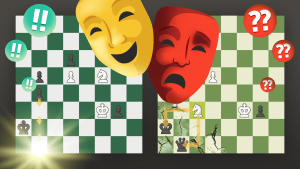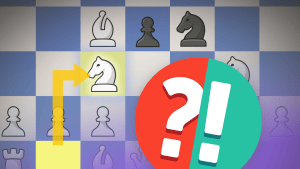
Twins
Good tactical skills are all about pattern recognition. If, for example, you have solved a dozen 'back rank checkmate' problems, then I can guarantee that next time you play a tournament game and your opponent doesn't create a luft for his King by playing h6 or g6, you'll look at an opportunity to checkmate him on the back rank! That's why it is so important to know typical tactical patterns. I discussed many of them here on chess.com in my "Typical patterns everyone should know" series.
Unfortunately, some combinations are difficult to classify due to their uniqueness. Please take a look at the next game for a nice example of a very beautiful and very rare combination.
What kind of a combination have we just witnessed? The best I can come up with is "Attack on the King that got stuck in the center". But this is a very broad category and therefore many games there could possibly have absolutely nothing in common. Take a look at the next iconic example:
Of course you all easily recognized the famous "Immortal Game". It is a textbook example of attacking a King that got stuck in the center, but this game has practically nothing in common with the beautiful Lilienthal combination. Or let me put it this way: usually when you are familiar with one combination in a certain category it makes it easier to find the next combination in the same category. But obviously it is not the case with the Lilienthal-Capablanca and Anderssen-Kieseritzky games.
Now let's analyze the next famous game of Tal.
(Just in case you are wondering how Tal converted his endgame advantage into a win, here is the rest of the game:)
Now look at the first and the third positions of this article and you'll be hard-pressed to find many similarities there. Actually I see only two common things in these positions: in both games Black had an uncastled King and the winning move was e5xf6. Yet to me these two games are twins. Call them Arnold Schwarzenegger and Danny DeVito kind of twins, but twins nonetheless. Of course Michail Tal knew the Lilienthal game and it made his task easier (but I have no doubt that he would have found the combo even if he had never seen the Lilienthal-Capablanca game).
My point is very simple: next time you see a beautiful combination (even if it was played by your club-mate) try to determine what made this combo possible, what are the key features of it. Then before you even know it, your memory will retrieve this valuable knowledge from your brain at an important moment in your own games.
Good luck!

